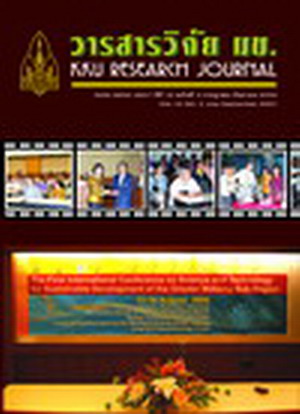Effect of Additive Concentrations on Sintering Behavior of the β” –alumina Solid Electrolyte
Main Article Content
Abstract
Production of the ceramic β″-alumina solid electrolyte proposed for the electric vehicle battery system was a main aim of this work. A liquid phase sintering technique was employed to reduce the sintering temperature. Powder of β″-alumina with general formula Na0.253Mg0.747Al10.253O17 was synthesized by calcination at 1,250 o C for 10 hours. The XRD results indicate that calcination produced β″-alumina as the majority phase with a tiny amount of β′-alumina. Calcined powder was milled and mixed with 2 additives, CaHPO4 and NTS glass (2Na2 O.TiO2 .3SiO2 ) prior to shaping by the dry pressing technique. Two selected sintering temperatures were 1,075 and 1,400 o C. XRD results for the sample containing 15 mol% of CaHPO4 and 15 mol% of NTS glass suggest that reaction of β″-alumina and the additives produced AlNaSiO4 at 1,075 o C and Na2 Si2 O5 at 1,400 o C. At higher concentration of CaHPO4 , the reaction produced CaAl2 Si2 O8 with concentration proportional to the mol% of CaHPO4 . SEM study revealed larger grain sizes for the ceramic containing 20 mol% of CaHPO4 and 10 mol% of NTS and sintered at 1,400 o C. It was also found that the density of the β″-alumina ceramics increased with increasing sintering temperature and the mol% of NTS glass.


